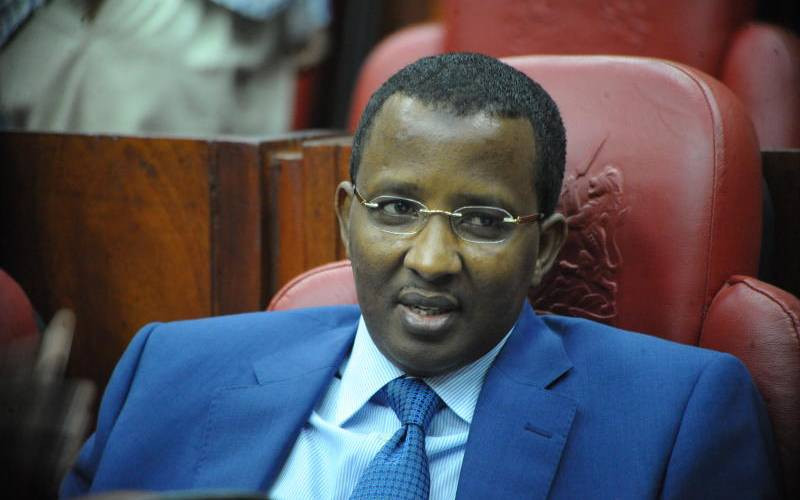The country may warm up to more cities, if urban areas improve on their infrastructure and management. The Urban Areas and Cities Act provides criteria for classifying cities as opposed to the traditional political ‘rewards’ to upgrade urban areas in return for votes in General Elections.
For instance, there was confusion when former President Moi elevated Kisumu and Mombasa into cities, slightly over ten years ago.
However, Section 60 of the Urban Areas and Cities Act provides that Kisumu and Mombasa are cities under the law.
The Urban Areas and Cities Act seeks to give effect to Article 184 of the Constitution which provides for the, classification, governance and management of urban areas and cities.
Other objectives are to provide for the criteria of establishing urban areas, principle of governance and participation of residents and for connected purposes.
According to the Act, before classification as a city, urban areas must have infrastructural facilities like roads, street lighting, markets, fire stations, waste disposal and disaster management capacity.
They must also have integrated development plans and demonstrate capacity to generate sufficient revenue to sustain operations.
Other requirements include a demonstrable good system and records of prudent management and capacity to effectively and efficiently deliver essential services to residents.
The urban areas must also have populations of at least 500,000 residents as per the final gazetted results of the last population census.
There should also be institutionalised active participation by residents in the management of affairs.
Even after fulfilling the requirements, the President may on resolution of the Senate confer city status.
Before conferment by the President, the board of a municipality may pass a resolution and apply to the county executive committee for consideration.
If the county executive committee approves the application, the Governor must constitute a committee to consider the proposal and advise.
The committee comprises of relevant professionals in good standing nominated by the Institution of Surveyors of Kenya, Kenya Institute of Planners and Law Society of Kenya.
Others are the Institute of Certified Public Accountants of Kenya, business community and an association of urban areas and cities.
Stay informed. Subscribe to our newsletter
Legally, when the committee concurs that the municipality meets the criteria for classification as a city, the governor submits the recommendation to the county assembly for approval.
If approved, the clerk of the county assembly will be required to forward the resolution to the Senate for consideration.
Senate Approval
Lastly, when the Senate approves the recommendation, the clerk should send the resolution to the President for conferment of city status. For participation of residents in the management of cities, the Act provides for citizen fora which empower them to deliberate and make proposals on provision of services.
They can also participate in proposing issues for inclusion in policies and legislation, annual budget estimates of the county and national budget.
Nevertheless, even as the Urban Areas and Cities Act provides for the process of conferment of city status, not many towns will live up to expectations, if history is anything to go by.
For instance, local authorities have over the past decades been indebted following grand corruption and poor management. Before the immediate former Local Government Minister Musalia Mudavadi left office, local authorities countrywide were indebted to the tune of a whopping Sh13 billion.
He once warned local authorities to clear their debts by 2010 or forfeit the receipt of money under the Local Authority Transfer Fund. Mudavadi was speaking in Mtwapa town during the official launch of digital mapping and the preparation of integrated strategic urban development plans for five towns.
The towns that were then being developed into model towns were Mtwapa, Garissa, Bungoma, Othaya and Eldoret. The initiative entailed putting physical developments of an area on a map to easily locate them on the ground.
— The writer is an advocate of the High Court
([email protected])
 The Standard Group Plc is a
multi-media organization with investments in media platforms spanning newspaper
print operations, television, radio broadcasting, digital and online services. The
Standard Group is recognized as a leading multi-media house in Kenya with a key
influence in matters of national and international interest.
The Standard Group Plc is a
multi-media organization with investments in media platforms spanning newspaper
print operations, television, radio broadcasting, digital and online services. The
Standard Group is recognized as a leading multi-media house in Kenya with a key
influence in matters of national and international interest.
 The Standard Group Plc is a
multi-media organization with investments in media platforms spanning newspaper
print operations, television, radio broadcasting, digital and online services. The
Standard Group is recognized as a leading multi-media house in Kenya with a key
influence in matters of national and international interest.
The Standard Group Plc is a
multi-media organization with investments in media platforms spanning newspaper
print operations, television, radio broadcasting, digital and online services. The
Standard Group is recognized as a leading multi-media house in Kenya with a key
influence in matters of national and international interest.






